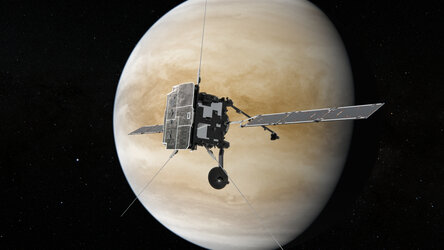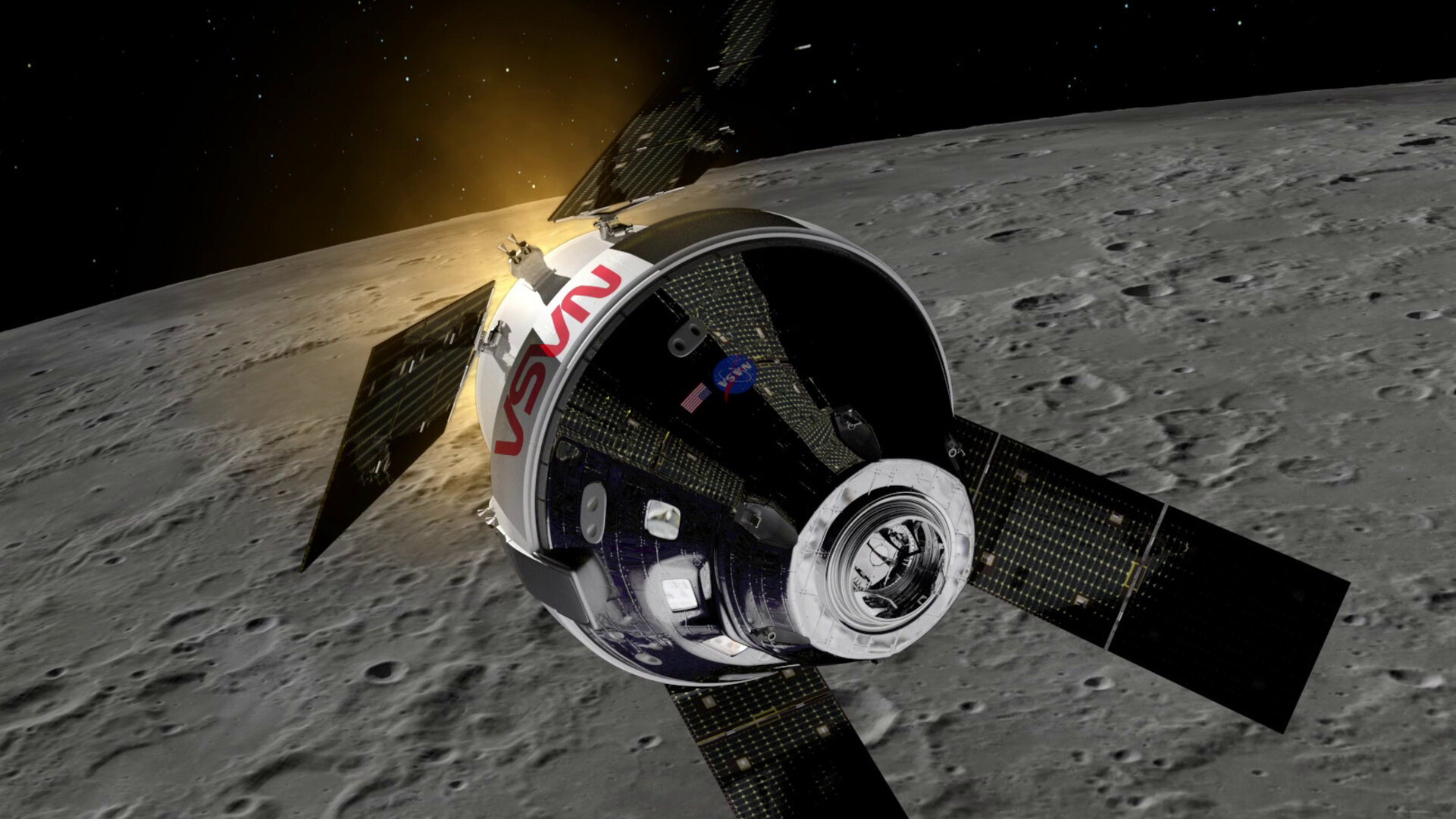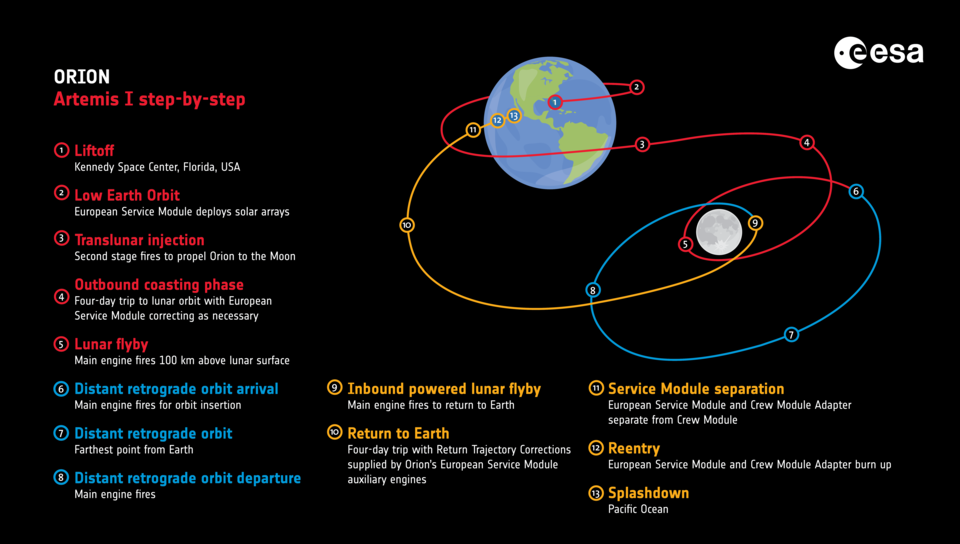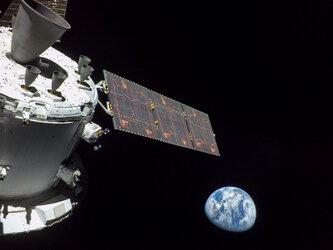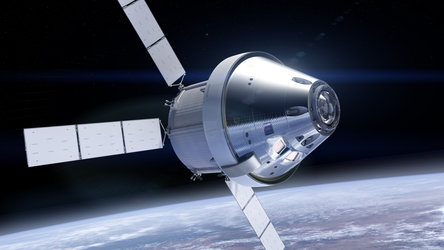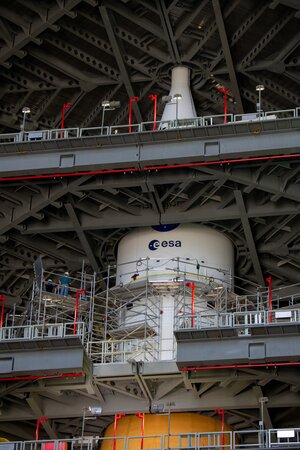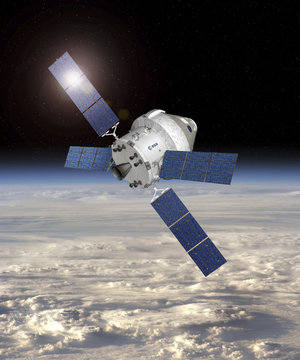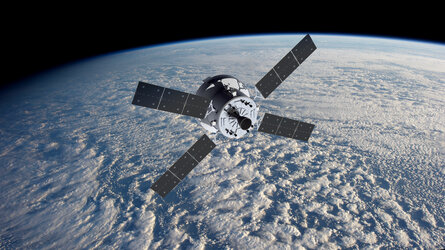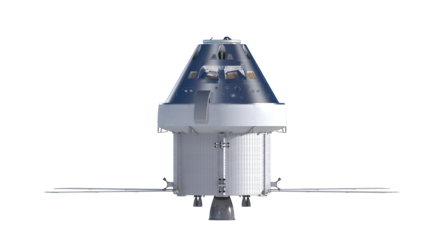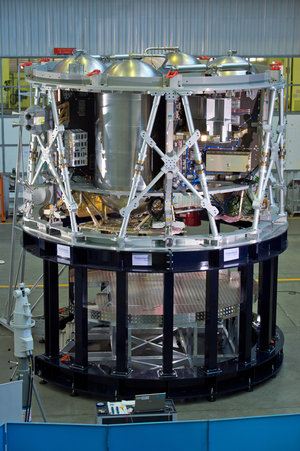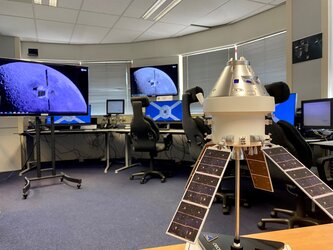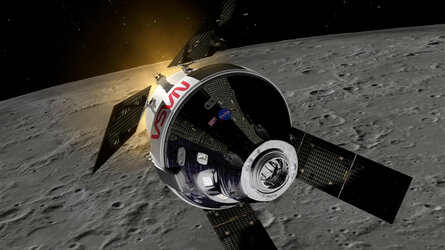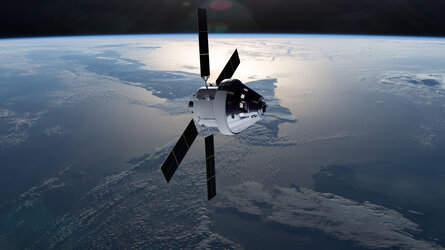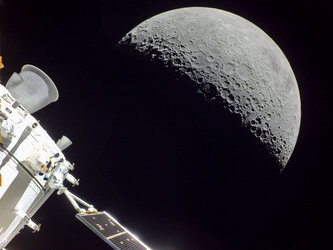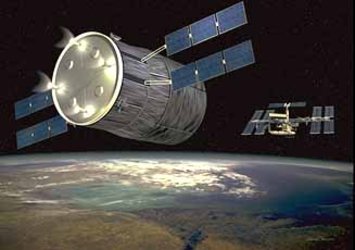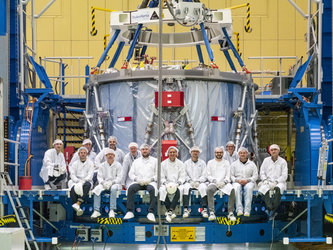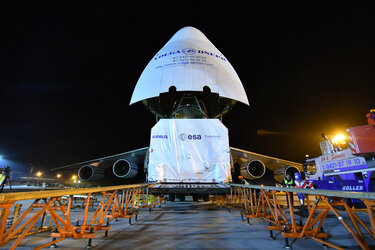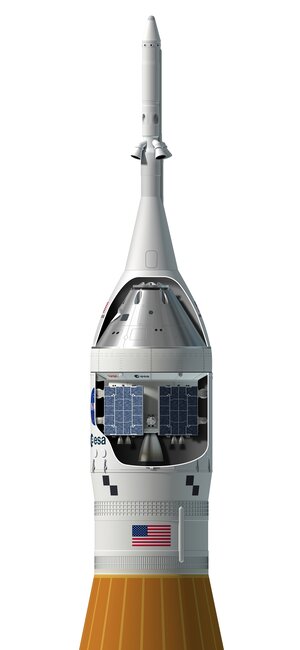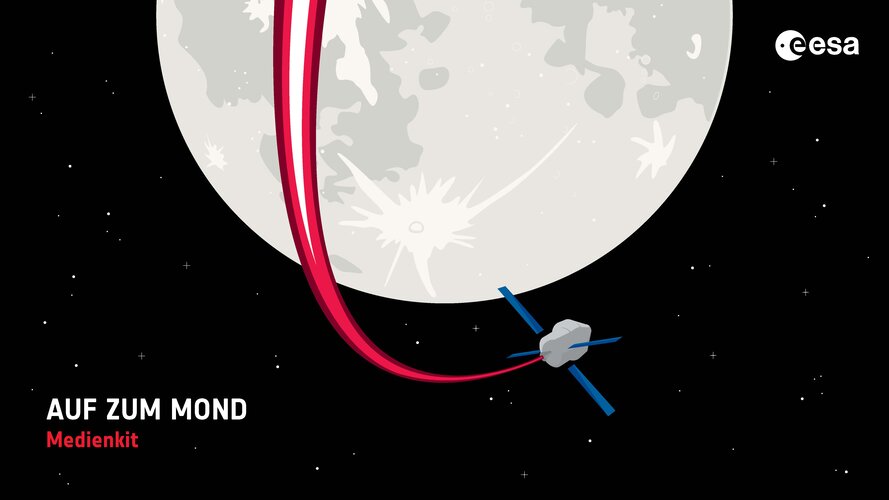Artemis I
The first mission for Orion and the European Service Module will send the spacecraft beyond the Moon and back. This mission called Artemis I (formerly Exploration Mission-1) will not carry a crew but will instead be controlled from the ground.
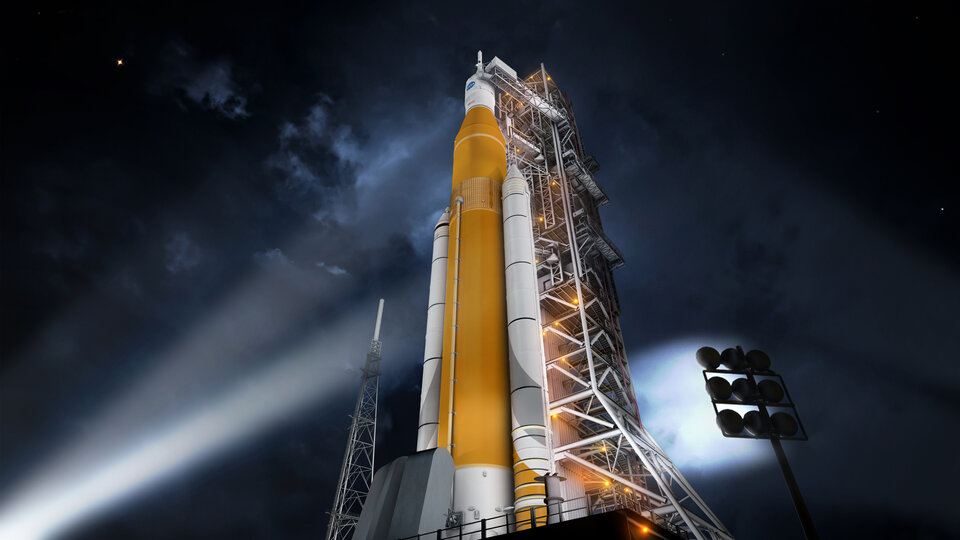
It will be launched by the Space Launch System from the Kennedy Space Center in Florida, USA. The spacecraft will enter a low-Earth orbit before the rocket’s upper stage fires to take it into a translunar orbit.
The spacecraft will perform a flyby of the Moon, using lunar gravity to gain speed and propel itself 70 000 km beyond the Moon, almost half a million km from Earth – farther than any human has ever travelled.
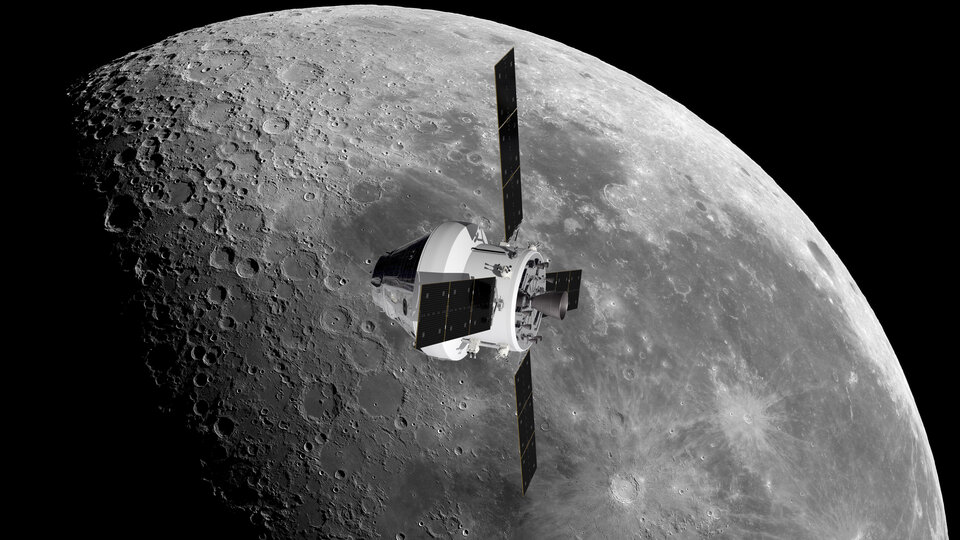
On its return journey, Orion will do another flyby of the Moon before heading back to Earth.
The Artemis I mission duration depends on the launch date and even time, and will last from 20 to 40 days depending on how many orbits of the Moon mission designers will have the European Service Module guide Orion on its journey. The variation in mission length is because the mission must end with a splashdown during daylight hours in the Pacific Ocean, off the coast of California, USA. The European Service Module separates and burns up harmlessly in the atmosphere shortly before the Orion crew module splashes down.
The second Artemis mission will have a similar flight plan but with four astronauts.
Technical details
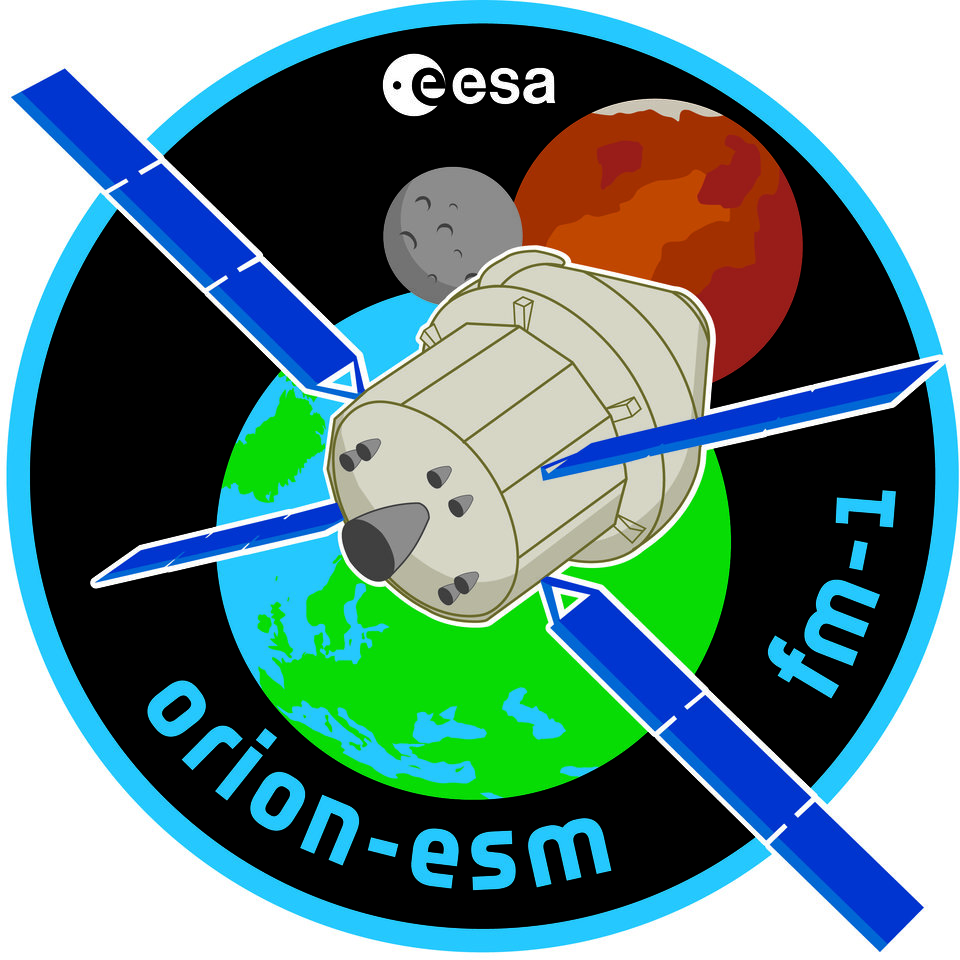
The total launch mass of European Service Module is 13 500 kg for the lunar missions (Orion will weigh over 20 tonnes in total):
- 8600 kg of usable propellant
- 240 kg of potable water
- 30 kg of nitrogen
- 90 kg of oxygen
- Payload volume up to 0.57 m3
- Payload mass up to 380 kg
Artemis I step by step:
- Launch by Space Launch System from pad 39B at NASA’s Kennedy Space Center, USA
- Mission control perform final checks in low-Earth orbit
- Translunar injection by interim cryogenic propulsion stage (ICPS)
- Trip to the Moon
- Flyby of the Moon with gravity assist
- Injection in Distant Retrograde Orbit
- Distant Retrograde Orbit (70 000 km from the Moon, almost 500 000 km from Earth)
- Departure from Distant Retrograde Orbit
- Second flyby of the Moon with gravity assist
- Home trip to Earth
- Separation of the Crew Module from the expendable elements of Orion (the European Service Module and the Crew Module Adapter)
- Reentry of the Crew Module and splashdown in the Pacific Ocean








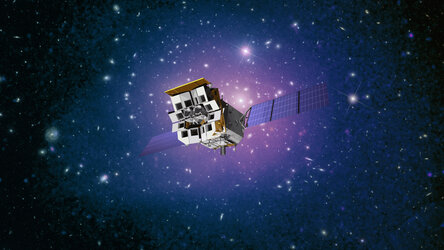






 Germany
Germany
 Austria
Austria
 Belgium
Belgium
 Denmark
Denmark
 Spain
Spain
 Estonia
Estonia
 Finland
Finland
 France
France
 Greece
Greece
 Hungary
Hungary
 Ireland
Ireland
 Italy
Italy
 Luxembourg
Luxembourg
 Norway
Norway
 The Netherlands
The Netherlands
 Poland
Poland
 Portugal
Portugal
 Czechia
Czechia
 Romania
Romania
 United Kingdom
United Kingdom
 Slovenia
Slovenia
 Sweden
Sweden
 Switzerland
Switzerland





















